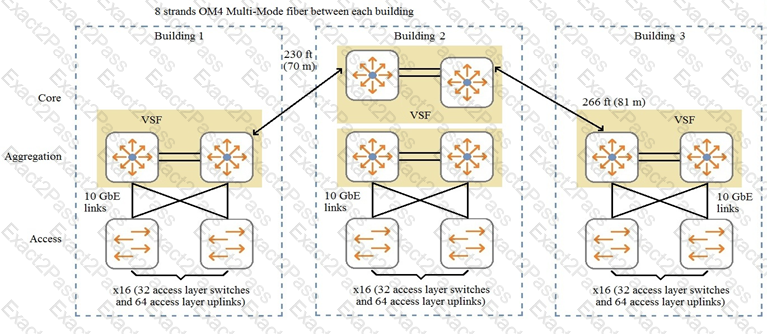Last Update 1 day ago Total Questions : 65
The Designing Aruba Solutions content is now fully updated, with all current exam questions added 1 day ago. Deciding to include HPE6-A47 practice exam questions in your study plan goes far beyond basic test preparation.
You'll find that our HPE6-A47 exam questions frequently feature detailed scenarios and practical problem-solving exercises that directly mirror industry challenges. Engaging with these HPE6-A47 sample sets allows you to effectively manage your time and pace yourself, giving you the ability to finish any Designing Aruba Solutions practice test comfortably within the allotted time.
A customer requires a wireless upgrade. The architect proposes:
The customer is interested in wired authentication, as well as wireless authentication, but does not have the budget to upgrade the wired network. The wired network does not currently support 802.1X or RADIUS.
Which feature of the Aruba solution should the architect explain to justify the proposed solution?
An architect proposes four 7210 Mobility Controllers (MCs) to support about 1,500 client APs. The customer environment will have a maximum of about 20,000 wireless clients. The customer wants hardware MMs with an active and standby deployment. What is the minimum solution that meets the customer requirements?
An architect plant to purpose an Aruba wireless solution with several Mobility Controllers (MCs) and a Mobility Master (MM) architecture. Wireless users run Skype for Business, a Unified Communications (UC) solution. The architect plans to use the Aruba SDN capabilities to integrate with the UC solution.
What helps to support high availability specifically for the SDN services?
Refer to the exhibit.

An architect selects 5406R switches for the aggregation layer. What is an appropriate amount of bandwidth for the link aggregation between each aggregation layer VSF fabric and the campus core?
An architect plans 128 APs to support 12,800 devices in a very high density (VHD) design. The customer requires high availability, so the architect plans to recommend a pair of controllers. What is one reason to recommend 7210 controllers rather than 7205 controllers for this deployment?
An architect proposes an Aruba solution with a hardware Mobility Master (MM) to a customer. The customer has a disaster recovery site which is connected to the main site at Layer 3. The customer requires the MM to remain available in case of a total site failure.
Which plan meets the customer requirements?
What typically drives the need for an aggregation layer in modern networks?

